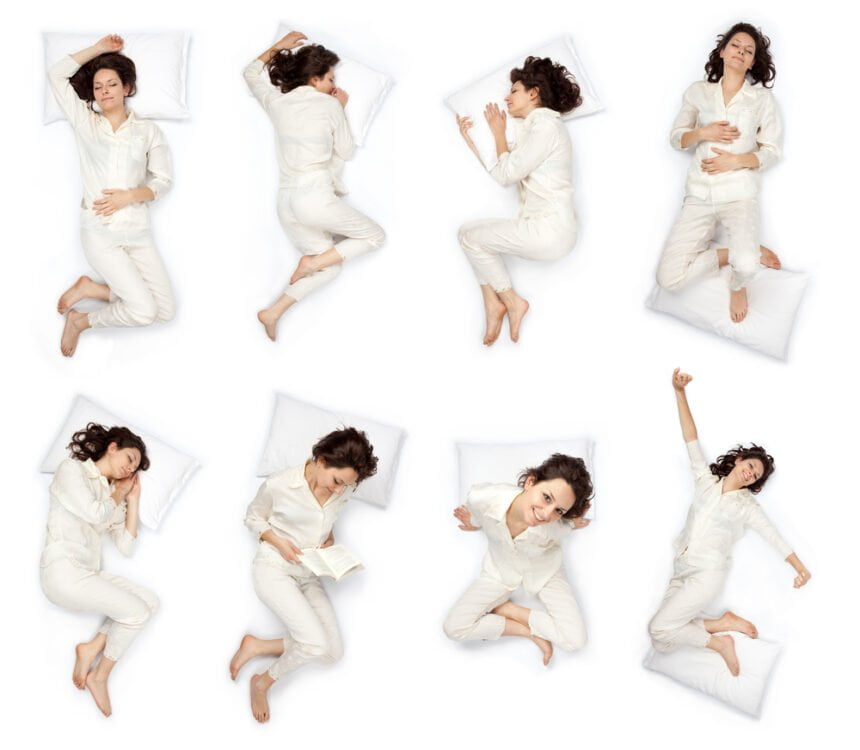You might be surprised to learn that the quality, quantity and type of sleep you get has a huge impact on your health. You may be most shocked to discover that your sleeping position has a big impact on your health, too. Learn about the most common sleep styles and how they affect your overall health.
Back Sleepers
If you like to sleep on your back, you’re a rare breed. It’s an uncommon sleep position, but it’s the optimal one. Sleeping on your back keeps your body’s natural alignment. It also distributes your body weight equally. It’s an ideal position for reducing pressure. Too much pressure on one spot is the reason why a lot of people move and fidget in their sleep. If you sleep on your back, you’re more likely to sleep without interruptions.
If you have chronic pain or wake up stiff and sore, sleeping on your back is the best option. It might take you a while to get used to this sleep position. If you have neck pain, sleeping on your back isn’t a good idea. It may cause your pain to get worse. People who have acid reflux or frequent heartburn may benefit from back sleeping if they position their head higher than their stomach. A good, firm pillow is necessary to achieve this. Back sleeping could reduce wrinkles that develop from having your face in a pillow. People with sleep apnea should not sleep on their backs because it may exacerbate disruptions in breathing.
Stomach Sleepers
If you sleep on your stomach, beware. This position entails the most health risks. The only time sleeping on your stomach is recommended is if you snore or have sleep apnea and can’t tolerate sleeping on your side. People who sleep on their stomachs may experience more neck and back pain. That’s because this position isn’t natural for the spine. Spending seven to eight hours a night in this position causes pressure and may cause you to wake up stiff and achy. Stomach sleepers usually have their faces pushed into a pillow. This may cause some fine lines and wrinkles. If you have trouble finding a comfortable way to sleep that isn’t on your stomach, you may have a bad mattress.
Side Sleepers
A majority of people sleep on their side. It’s the next best after sleeping on your back. If you snore or have sleep apnea, this is the recommended sleep position for symptom relief. Your sleep partner may also sleep more soundly if you rest on your side.If you have neck or back pain, sleeping on your side should be more comfortable. Overnight, your brain clears out metabolic waste products. This process is more efficient when you sleep on your side. The removal of those waste products lowers your risk of brain diseases, including Alzheimer’s disease and dementia.
The side you sleep on matters. Sleeping on your left side is recommended if you have acid reflux. When you sleep on your left side, the acid from your stomach is less likely to seep into your esophagus. If you are pregnant, you should also sleep on your left side. That’s because this position facilitates better circulation and decreases pressure on your heart. Keep in mind that side sleepers may get as many wrinkles as stomach sleepers, but those wrinkles will be on the side of your face upon which you sleep. Side sleepers tend to move around a lot because of the pressure on the arm that’s under the body.
Fetal Sleeper
The fetal position is the most popular sleep position for women. It’s a sub-type of sleeping on your side, but your spine and legs are folded in toward your chest. Fetal sleepers usually have the same health benefits of side sleepers. However, the tightly curled position can lead to more stiffness in the hips and knees. Your breathing may be affected because your diaphragm is more constricted. Your lungs don’t have as much room to expand in this position. Use a pillow between your belly and legs to reduce the negative effects of the fetal sleep position.
Choosing the Right Mattress for a Better Night’s Sleep
Many stomach sleepers find this position more comfortable because they have a saggy mattress. If your mattress is 10 years old or older, it’s time for a replacement. If you must sleep on your stomach, get the firmest mattress available. If you’re a side sleeper, look for a mattress with individual coils and many layers of foam. Back sleepers may feel comfortable on a medium- firm to firm mattress.
Now that you know how your sleep style affects your health, you can make some changes. Opting to sleep on your back or side takes practice, but it could help you feel better and sleep more soundly.

